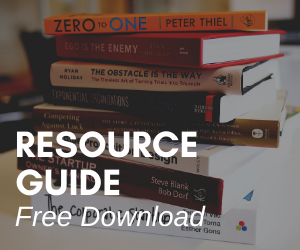JET Program Personal Finance: The Ultimate Guide (Part 1)
This post is part of a financial guide series for US participants departing for Japan via the Japan Exchange & Teaching Program. While I wrote this article with folks from the US in mind, some information should be valuable to all outgoing JETs.
Disclaimer: The content expressed in this post are the sole views of Boston Intercultural Consulting. They do not reflect CLAIR, JET, JETAA, AJET, USJETAA, or the Japanese government. Contact your local consulate for official information. Confirm all information with any bank or credit card before applying, as rates and fees are subject to change. Investing carries significant risk, and Boston Intercultural Consulting bears no responsibility for financial loss.
So, you submitted your application on time, survived the interviews, and finally got your placement information. One big green question remains before you start packing: What to do about money while on the program? This first post identifies low-hanging fruit to pick before you depart, as you should be able to plow through these steps in one or two sittings.
A quick acknowledgment, which we'll dive deeper into in part 2, is that we're all at different stages in our financial journey. Our goal is to lower stress and save money, hoping that you will feel more confident and secure. Some of the advice I share may not apply to you now but is something worth keeping in mind down the road when it does.
Let's begin by logging into any accounts you may have, including your bank, credit card, and other debt accounts, and skim your past 12 statements. Pay special attention to overdraft fees, maintenance fees, and any subscriptions you're no longer using. Switch to paperless billing wherever possible so you won't be depending on anyone back home to open superfluous mail for you. If you pay off your credit card each statement cycle or pay a set amount each month, consider automating payments, leaving a sufficient balance for a few months in your US checking account. If you still expect to receive an abundance of paper mail in the US and worry it will be lost, research virtual mailbox services that will collect, scan, and notify you of any mail you’ve received. We will discuss sending money home in a future post.
Second, cancel all of your annual subscriptions. You'll still be able to access content and services for the remainder of the term, but now you won't need to worry about any surprise auto-renewal. For this reason, I always cancel the annual subscription immediately after the first payment goes through. You can resubscribe later on, and who knows how your daily habits might change once you're on JET.
Next, let's take a look at banking (fun, I know). If you haven't already, come to terms with the fact that banks have competitors, and you haven't entered any marriage vows with your account. Make a note of your bank's restrictions on minimum balances and savings withdrawals. If your employer has been depositing your paycheck directly into your account, your bank may start charging you fees once that stops. While you're at it, take a few minutes to research other options, paying particular attention to FDIC insured online-only banks like Ally. Indeed the low-interest environment we're in has dragged down how much we make from letting money sit in a savings account. The benefits of leaving brick-and-mortar behind are clear, however, when you crunch the numbers. Bank of America's debit card, for example, charges $5/withdrawal plus a 3% foreign transaction fee, plus whatever the Japanese ATM wants to charge you. Simultaneously, their advantage savings account offers a mere .01% interest rate, along with a host of expenses.
Meanwhile, Ally Bank's savings account offers 60 times BOAs base interest rate, carries few if any fees, and their debit card's foreign transaction fee is 1% or less, plus the Japanese ATM fee. If that's not cool enough, they'll even reimburse you up to $10 per month for any ATM fees you pay in the US. The only downside to Ally is that you can't make cash deposits with them, but that isn't something you're going to be doing while in Japan, and you can always transfer money from another account.
Assuming you have a credit card, the next thing you'll want to do is look into the foreign transaction fee. If it's anything but 0%, try applying for a Visa or Mastercard without such fees. Although I didn't paint Bank of America positively when I compared it to Ally, their Travel Rewards credit card is excellent. American Express and Discover are smaller players outside the US, so though you may luck out, it would be safer to go with a Visa or Mastercard or carry one as a backup. Finally, depending on your situation, credit score, and amount of traveling, you may find that a credit card with an annual fee may net you additional benefits. You can find a list of cards here and crunch the numbers for yourself.
Seeing as how cash is king in Japan and you'll have a Japanese bank account, you might be wondering why we're spending so much time on US finances. Here are a few reasons why:
Small fees add up and are easy to lose track of during your adventure in Japan. You'll thank yourself later for working everything else out now.
You'll need a bank account in the US to transfer money home to (more on this in a later post).
You may or may not qualify for a Japanese credit card.
Given the fluctuating rate of the US dollar versus the yen, you may at times want to make some large purchases in USD from your American account, such as when booking a flight.
While cash is still universally accepted, you might be surprised by who is accepting US cards compared to even a decade ago.
Finally, and most practically, it may be some time before you receive your first paycheck.
Once you do start getting paid in Japan, you'll make the bulk of your non-online purchases using the Japanese yen you're earning. Until then, as a rule of thumb, you'll get the best deal paying for purchases in Japan with a US 0% transaction fee credit card wherever possible. For cash, your best bet is to withdraw yen from a Japanese ATM using a US debit card with a <1% foreign transaction fee (such as Ally's). Exchanging USD cash for yen in Japan will result in a less favorable exchange rate than withdrawing from an ATM. Still, you'll want to bring some money in either currency if you experience issues with your cards (remember to inform your bank and credit cards that you'll be abroad!). Because the supply of yen is high and the dollar supply is lower in Japan than in the US, avoid exchanging large amounts of USD to yen in the US. If you run into an emergency, you can use your US debit card to withdraw cash in yen from your US accounts.
A few closing notes on cards and banks:
When paying with a 0% foreign transaction fee credit card abroad and given the option of paying in dollars or local currency, always select the local currency for the best rate.
Japanese ATMs turn off after a specific time and charge a different fee based on time and day. Japanese often carry ¥20,000 - ¥30,000 around with them, and you should adopt this practice.
Switch two-factor authorization to go through email. If your bank or credit card texts you a confirmation code, you may not receive it abroad.
Finally, while you have eyes on all your accounts, consider signing up for a free personal finance application like Mint. With bank accounts in multiple countries, you'll want a one-stop place to check in every week or two to see where your balances are and to confirm if money sent home has arrived. You won't control your accounts from Mint, but one of the huge benefits is that they'll notify you if you paid any fees.
If you're drowning in online accounts, consider setting up for a free password manager like LastPass, which will help you stay secure with unique autogenerated passwords and storage.
That should be plenty to get started. So get yourself a warm beverage, and enjoy investing in the adventure ahead.
In Part 2, we'll work on staying ahead of the game by discussing practical investment tips and paying off debt.




